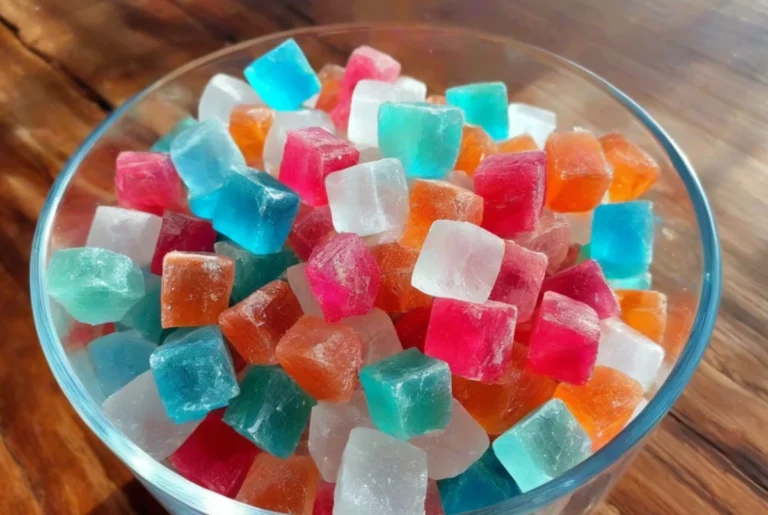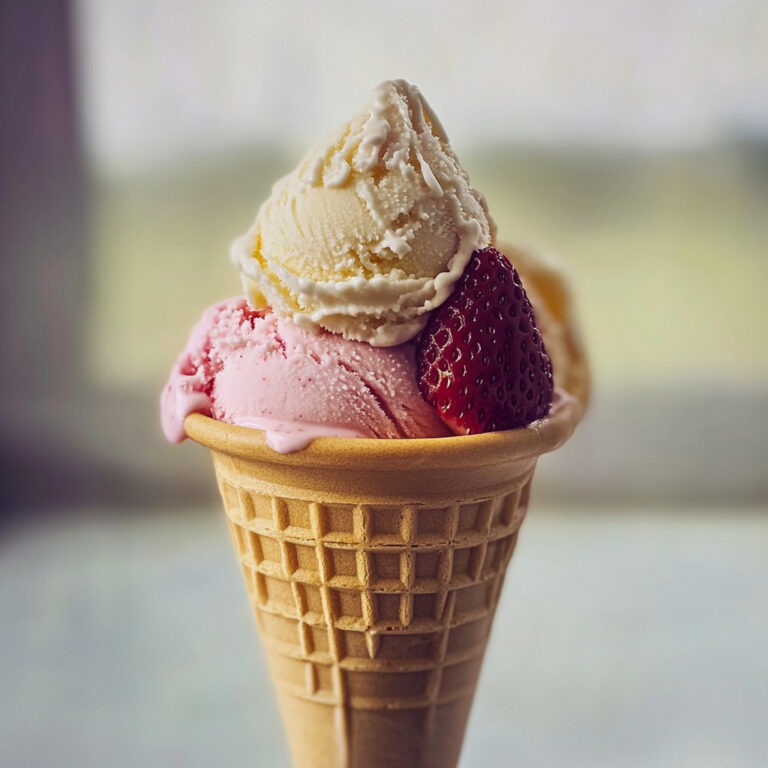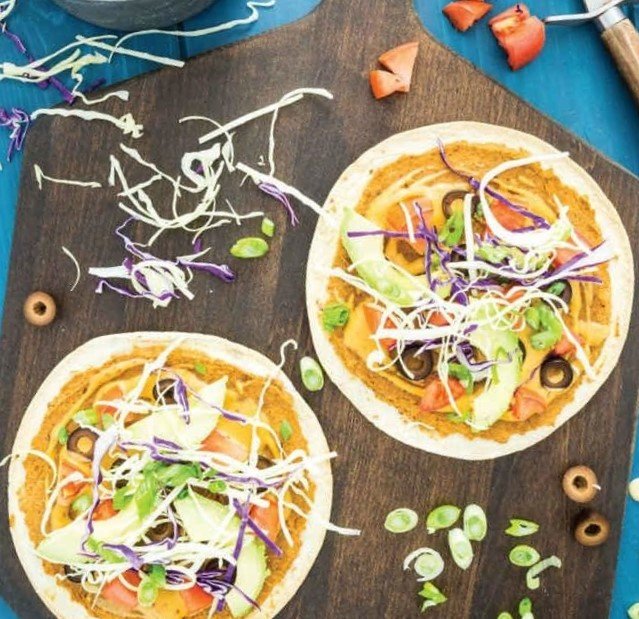cowboy butter recipe
Cowboy Butter might sound like a simple condiment, but it packs a punch far beyond what you might expect. This savory, buttery concoction has become a favorite among food lovers, home cooks, and chefs alike for its rich flavor and versatility. Traditionally made with a blend of butter, garlic, fresh herbs, and spices, Cowboy Butter is a delightful addition to a wide variety of dishes. Whether you’re grilling up a juicy steak, roasting vegetables, or simply looking for a delicious dipping sauce, Cowboy Butter is sure to elevate your meal to the next level.
The origins of Cowboy Butter are somewhat shrouded in mystery, but its name gives a clue to its rugged, down-to-earth roots. Likely inspired by the hearty and flavorful cooking of American cowboys, who needed high-energy, delicious meals to fuel their hard work on the range, Cowboy Butter embodies the spirit of the American West. Over time, this buttery concoction has evolved and found its way into kitchens far beyond the cowboy campsites, becoming a beloved addition to modern American cuisine.
In this comprehensive guide, we’ll explore everything there is to know about Cowboy Butter—from its essential recipe to creative variations, serving suggestions, and even its nutritional profile. By the end of this article, you’ll be equipped with all the knowledge you need to incorporate Cowboy Butter into your culinary repertoire and wow your guests at your next meal.
2. The Essential Cowboy Butter Recipe
Creating the perfect Cowboy Butter at home is both simple and rewarding. The rich, savory flavors come together in just a few minutes, and the ingredients are likely already in your kitchen. Here’s a step-by-step guide to making the ultimate Cowboy Butter.
Ingredients:
- 1 cup unsalted butter (2 sticks), softened
- 1 tablespoon Dijon mustard
- 1 teaspoon lemon juice (freshly squeezed)
- 1 teaspoon hot sauce (like Tabasco or your favorite brand)
- 1 teaspoon garlic powder or 2 cloves garlic, minced
- 1 teaspoon paprika
- 1/2 teaspoon cayenne pepper (optional, for extra heat)
- 1/4 teaspoon smoked paprika (optional, for a smoky flavor)
- 1 tablespoon fresh parsley, chopped
- 1 tablespoon fresh chives, chopped
- 1 tablespoon fresh thyme leaves, chopped
- 1 teaspoon salt, or to taste
- 1/2 teaspoon black pepper, freshly ground
- 1 tablespoon Worcestershire sauce
Instructions:
- Prepare the Butter: Start by placing the softened butter in a mixing bowl. Use a fork or a whisk to beat the butter until it’s smooth and creamy. The consistency of the butter is crucial—if it’s too hard, it won’t mix well with the other ingredients, and if it’s too soft, it might separate.
- Add the Flavors: Gradually mix in the Dijon mustard, lemon juice, hot sauce, garlic (or garlic powder), paprika, cayenne pepper, and smoked paprika. Each of these ingredients contributes to the complex flavor profile of Cowboy Butter—spicy, tangy, and a little bit smoky.
- Herbs and Seasoning: Now it’s time to add the fresh herbs. Parsley, chives, and thyme bring a burst of freshness to the rich butter. Add these along with the salt and pepper, and mix thoroughly. Fresh herbs are key here, as they provide a vibrant contrast to the buttery richness.
- Final Touches: Stir in the Worcestershire sauce, which adds a savory depth to the butter. Once everything is well combined, taste the butter and adjust the seasoning as needed. Some people prefer more heat, while others might want to dial back the salt—this is your chance to make the Cowboy Butter perfect for your palate.
- Serving Suggestions: Transfer the Cowboy Butter to a small bowl if you’re planning to serve it right away, or store it in an airtight container in the refrigerator. You can use it as a spread over grilled meats, roasted vegetables, or fresh bread, or melt it down as a dipping sauce.
Tips and Tricks:
- Softening Butter: If you forgot to soften your butter ahead of time, you can cut it into small cubes and let it sit at room temperature for about 10-15 minutes. Alternatively, microwave it for 5-10 seconds, but be careful not to melt it.
- Customizing Heat: Adjust the heat level by varying the amount of cayenne pepper or hot sauce. You can also experiment with different types of hot sauces for unique flavors.
- Storage: Cowboy Butter can be stored in the refrigerator for up to a week, or you can freeze it in small portions for up to three months.
3. The Origins and History of Cowboy Butter
Cowboy Butter, while not as ancient as some culinary traditions, has a rich history that reflects the resourceful and hearty spirit of the American frontier. To understand Cowboy Butter, it’s helpful to first understand the context of cowboy cooking and how the rugged lifestyle of cowboys influenced the foods they prepared and enjoyed.
The Cowboy Diet:
The American cowboy, often depicted as a solitary figure driving cattle across vast plains, relied on simple yet nourishing meals. The diet of a cowboy was built around what could be easily transported and prepared over an open fire. Staples included beans, beef (particularly tough cuts like brisket, which could be slow-cooked), biscuits, and coffee. Butter, being a rich source of fat and flavor, was a prized ingredient, though it was often hard to come by on the trail.
Cowboys needed their meals to be hearty, providing the necessary energy for long days of labor. Meals were often spiced with whatever herbs and spices were available, creating flavorful dishes from minimal ingredients. This resourcefulness is a key aspect of cowboy cooking, and it’s reflected in the simplicity and bold flavors of Cowboy Butter.
The Evolution of Cowboy Butter:
While it’s unlikely that the exact recipe for Cowboy Butter as we know it today was part of the traditional cowboy diet, the concept of enhancing simple ingredients with bold flavors is very much in line with cowboy cooking. The use of butter as a base, combined with spices, herbs, and other flavorings, reflects a modern twist on this rustic cuisine.
The name “Cowboy Butter” likely comes from the idea that it embodies the hearty, robust flavors associated with cowboy cooking. Over time, this simple butter-based condiment has evolved, with home cooks and chefs alike adding their own twists. Today, Cowboy Butter is often associated with grilling and barbecuing—activities that align with the outdoor, rugged nature of cowboy life.
Cowboy Butter in American Cuisine:
As American cuisine has evolved, Cowboy Butter has found its place as a versatile and beloved condiment. It’s particularly popular in the Southern and Western United States, where it complements the bold flavors of barbecue, grilled meats, and hearty vegetables. In many ways, Cowboy Butter is a modern homage to the cowboy spirit, capturing the essence of a time when simple, flavorful food was both a necessity and a pleasure.
4. Variations of Cowboy Butter
One of the great things about Cowboy Butter is its versatility. The basic recipe can be easily adapted to suit a variety of tastes and dietary needs. Here are some popular variations that you might want to try:
Spicy Cowboy Butter:
For those who like their food with a bit of a kick, increasing the amount of cayenne pepper or adding a few dashes of your favorite hot sauce can turn up the heat. You might also consider adding crushed red pepper flakes or even a touch of ghost pepper powder if you’re really adventurous.
Smoky Cowboy Butter:
To give your Cowboy Butter a rich, smoky flavor, you can use smoked paprika instead of regular paprika, and add a few drops of liquid smoke. This variation pairs particularly well with grilled meats, adding an extra layer of depth to the flavor.
Herb-Infused Cowboy Butter:
If you’re a fan of fresh herbs, you can experiment with different combinations. Try adding fresh rosemary, tarragon, or oregano to the mix. Each herb brings its own unique flavor, allowing you to customize the butter to your liking. This variation is especially delicious when served with roasted or grilled vegetables.
Garlic Lover’s Cowboy Butter:
If you can’t get enough garlic, don’t be shy about doubling the amount of minced garlic in the recipe. You can also roast the garlic beforehand for a sweeter, more mellow flavor. Garlic Lover’s Cowboy Butter is fantastic on steak and makes for an irresistible dipping sauce.
Citrus Cowboy Butter:
For a brighter, zestier version, add some lemon zest or a splash of lime juice to the butter. This variation is excellent with seafood, particularly grilled shrimp or fish, where the citrus helps to balance the richness of the butter.
Dairy-Free Cowboy Butter:
If you’re avoiding dairy, you can still enjoy Cowboy Butter by using a high-quality dairy-free butter substitute. Many plant-based butters have the same creamy texture and can be flavored just as easily with herbs and spices.
Each of these variations can be adjusted to suit your personal preferences. The beauty of Cowboy Butter is that it’s a blank canvas, ready to take on whatever flavors you throw at it. Whether you prefer it spicy, smoky, or loaded with herbs, there’s a Cowboy Butter recipe out there for everyone.
5. Serving Suggestions and Pairings
Cowboy Butter is incredibly versatile and can be used in countless ways to enhance your meals. Here are some of the best dishes to serve with Cowboy Butter, along with a few creative ideas for using it in your cooking:
Steak:
Perhaps the most classic pairing, Cowboy Butter is a natural companion to a perfectly grilled steak. The rich, savory flavors of the butter melt over the hot meat, creating a luxurious sauce that complements the steak’s natural juices. For an added touch, try brushing the steak with Cowboy Butter as it cooks, infusing the meat with even more flavor.
Chicken:
Whether you’re grilling, roasting, or pan-searing chicken, Cowboy Butter makes an excellent topping. It’s particularly delicious on grilled chicken breasts, where the butter helps keep the meat moist and adds a burst of flavor with every bite.
Seafood:
Cowboy Butter pairs wonderfully with a variety of seafood. Try it melted over grilled shrimp, seared scallops, or a fresh fillet of fish. The bright notes of lemon and herbs in the butter balance the richness of the seafood, making for a perfect match.
Vegetables:
Don’t forget the veggies! Cowboy Butter is fantastic on grilled or roasted vegetables like asparagus, zucchini, or bell peppers. The butter adds a delicious richness that turns simple vegetables into a standout side dish.
Bread:
For a simple yet indulgent appetizer, serve Cowboy Butter with a warm loaf of crusty bread. The butter can be spread over the bread or served on the side as a dipping sauce. Either way, it’s a guaranteed crowd-pleaser.
Potatoes:
Whether you’re serving baked potatoes, mashed potatoes, or roasted baby potatoes, Cowboy Butter makes a delicious topping. The flavors of the butter seep into the potatoes, creating a dish that’s comforting and full of flavor.
Corn on the Cob:
Elevate your corn on the cob by brushing it with Cowboy Butter before serving. The herbs and spices in the butter complement the sweetness of the corn, making for an irresistible side dish.
Pairing with Beverages:
When it comes to drinks, Cowboy Butter pairs well with a variety of options. For a classic pairing, serve it with a robust red wine like Cabernet Sauvignon, which complements the rich flavors of the butter. If you’re serving Cowboy Butter with seafood, a crisp white wine like Sauvignon Blanc or Chardonnay works beautifully. For beer lovers, a cold, hoppy IPA or a malty amber ale can hold its own against the bold flavors of Cowboy Butter.
6. Nutritional Information and Health Considerations
While Cowboy Butter is undeniably delicious, it’s also important to be mindful of its nutritional content, especially if you’re watching your calorie or fat intake. Here’s a breakdown of the nutritional information for a standard serving of Cowboy Butter, along with some tips on how to make it a bit healthier.
Nutritional Breakdown (per tablespoon):
- Calories: 102
- Total Fat: 11.5g
- Saturated Fat: 7.3g
- Monounsaturated Fat: 3.0g
- Polyunsaturated Fat: 0.4g
- Cholesterol: 30mg
- Sodium: 60mg
- Total Carbohydrates: 0.1g
- Fiber: 0g
- Sugars: 0g
- Protein: 0.1g
As you can see, Cowboy Butter is relatively high in fat and calories, which is typical for a butter-based condiment. However, it’s also packed with flavor, meaning that a little goes a long way. A tablespoon or two can be enough to enhance an entire meal, making it possible to enjoy Cowboy Butter without overindulging.
Making a Healthier Version:
- Use Unsalted Butter: By using unsalted butter, you can control the amount of sodium in the recipe. This is particularly important if you’re trying to reduce your salt intake.
- Reduce the Butter: Consider cutting back on the butter and increasing the amount of herbs and spices. This will reduce the calorie and fat content while still delivering plenty of flavor.
- Opt for a Dairy-Free Alternative: If you’re looking to reduce the saturated fat content, consider using a plant-based butter substitute. Many of these alternatives are lower in saturated fat and can be just as delicious when flavored with herbs and spices.
- Incorporate More Citrus: Adding more lemon juice or zest can help balance the richness of the butter, allowing you to use less while still achieving a flavorful result.
Dietary Considerations:
Cowboy Butter can be adapted to fit a variety of dietary needs. For those following a keto or low-carb diet, it’s an excellent choice due to its high fat content. For vegetarians, Cowboy Butter is naturally meat-free, making it a great way to add flavor to plant-based dishes.
If you’re following a specific diet, such as gluten-free or dairy-free, be sure to check the ingredients you use to ensure they meet your dietary requirements. For example, some Worcestershire sauces contain gluten, so look for a gluten-free version if necessary.
7. Cowboy Butter in Modern Cuisine
As more people discover the joys of Cowboy Butter, it’s finding its place in a variety of culinary settings. From backyard barbecues to upscale restaurants, Cowboy Butter is being used in new and innovative ways.
Restaurant Menus:
Cowboy Butter has become a popular addition to restaurant menus, particularly in steakhouses and barbecue joints. Chefs love its bold flavor and versatility, using it as a sauce for meats, a topping for vegetables, or even a base for creating compound butters with unique flavor profiles. In some restaurants, Cowboy Butter is served as a signature house condiment, with each establishment putting its own spin on the classic recipe.
Home Cooking:
At home, Cowboy Butter has become a favorite among grill enthusiasts and home cooks alike. It’s easy to make, customizable, and adds a gourmet touch to everyday meals. Whether you’re hosting a dinner party or just looking to elevate a weeknight dinner, Cowboy Butter is a simple way to impress your guests and delight your family.
Global Influence:
While Cowboy Butter is distinctly American, its popularity has begun to spread internationally. In countries with a strong grilling or barbecue culture, such as Australia and Brazil, variations of Cowboy Butter are appearing in cookbooks and food blogs. The global influence is also leading to new interpretations of Cowboy Butter, with ingredients like miso, ginger, and cilantro being incorporated to create fusion versions that blend American and international flavors.
Creative Uses:
Beyond its traditional applications, Cowboy Butter is being used in some unexpected ways. Some adventurous cooks have started incorporating it into baked goods, using it as a base for savory scones or biscuits. Others are blending it with other ingredients, such as blue cheese or roasted garlic, to create unique flavor combinations.
The possibilities are endless, and part of the fun of Cowboy Butter is experimenting with new ways to use it in your cooking. Whether you’re sticking to the classic recipe or trying something new, Cowboy Butter is sure to add a burst of flavor to your meals.
8. Conclusion
Cowboy Butter is more than just a condiment—it’s a culinary secret weapon that can transform an ordinary dish into something extraordinary. With its rich, savory flavors and versatile nature, Cowboy Butter has earned its place in kitchens around the world. Whether you’re grilling up a steak, roasting vegetables, or simply looking for a delicious way to enhance your meals, Cowboy Butter is a must-have in your cooking arsenal.
As we’ve explored, the beauty of Cowboy Butter lies in its simplicity and adaptability. You can stick to the classic recipe or make it your own by experimenting with different herbs, spices, and flavorings. No matter how you choose to enjoy it, one thing is certain: Cowboy Butter is here to stay.
So, the next time you’re planning a meal, why not whip up a batch of Cowboy Butter and see how it can elevate your cooking? From its humble origins to its modern-day popularity, Cowboy Butter is a testament to the enduring appeal of simple, flavorful food.
Enjoy the process of making Cowboy Butter, and don’t be afraid to get creative. After all, in the spirit of the cowboys who inspired it, Cowboy Butter is all about bringing bold, satisfying flavors to the table.






